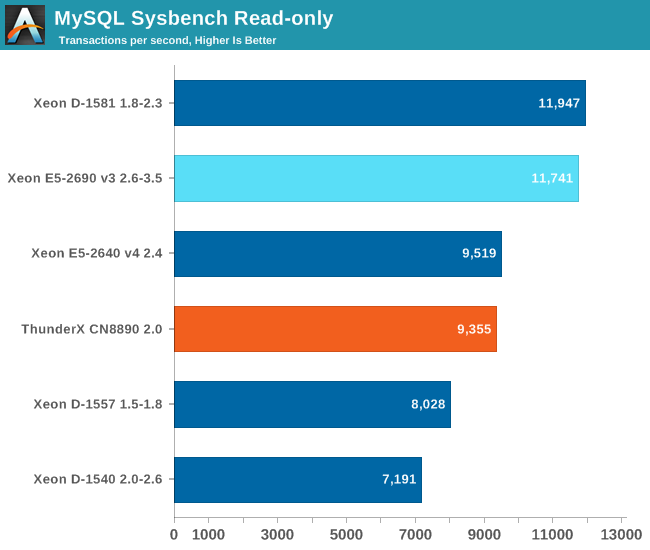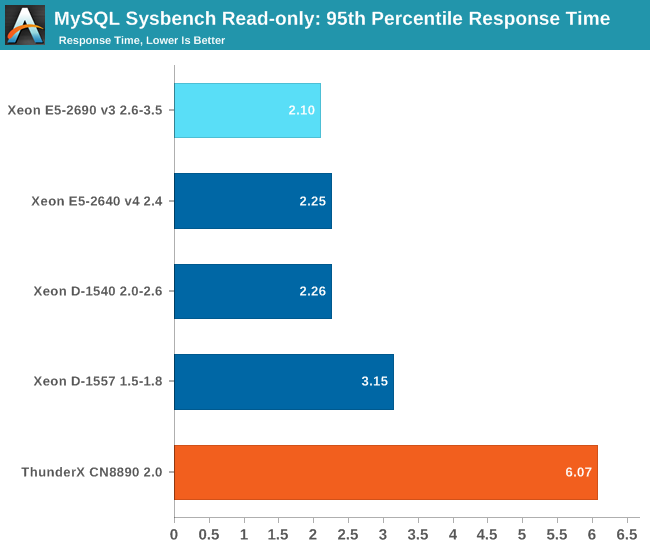Investigating Cavium's ThunderX: The First ARM Server SoC With Ambition
by Johan De Gelas on June 15, 2016 8:00 AM EST- Posted in
- SoCs
- IT Computing
- Enterprise
- Enterprise CPUs
- Microserver
- Cavium
MySQL 5.6.0
Last time we made a small error in our script, causing the Sysbench test to write to our SSDs anyway. That did not make the test invalid, but as we really want to isolate the CPU performance. However due to these changes, you cannot compare this with any similar Sysbench based benchmarking we have done before.
The Intel servers were running Percona Server 5.6 (the best-optimized MySQL server for x86), the ThunderX system was running a special ThunderX optimized version of MySQL 5.6. We used sysbench 0.5 (instead of 0.4) and we implemented the (lua) scripts that allow us to use multiple tables (8 in our case) instead of the default one. According to Cavium, there is still a lot headroom to improve MySQL performance. A ThunderX optimized version of Percona Server 5.7 should improved performance quite a bit.
For our testing we used the read-only OLTP benchmark, which is slightly less realistic, but a good first indication for MySQL Select performance.

A single ThunderX core is capable of 270 transactions/s and scales well: with 32 threads and one thread per core we still get about 8000 tr/s (or 250 tr/s/core). But beyond that point, scaling is much more worse: add another 16 cores and we only get 17% more performance.

But when we look at the response times, things look a lot less rosy. The ThunderX is a lot slower when handling the more heavy SQL statements.
It is clear that the ThunderX is no match for high frequency trading and other database intensive applications. However, when MySQL serves as just a backend for a website and satisfies simple "get data x or y" requests, the 4 extra ms are a small nuisance.










82 Comments
View All Comments
BlueBlazer - Friday, June 17, 2016 - link
Cavium is quite aware of their ThunderX single thread weakness, and directly from Cavium themselves https://www.youtube.com/watch?v=ei9uVskwPNE thanks to ARMdevices.net.TiffanyTown - Thursday, July 28, 2016 - link
hi, The JDK version you used is OpenJDK 1.8.0_91 . Did you build it yourself?